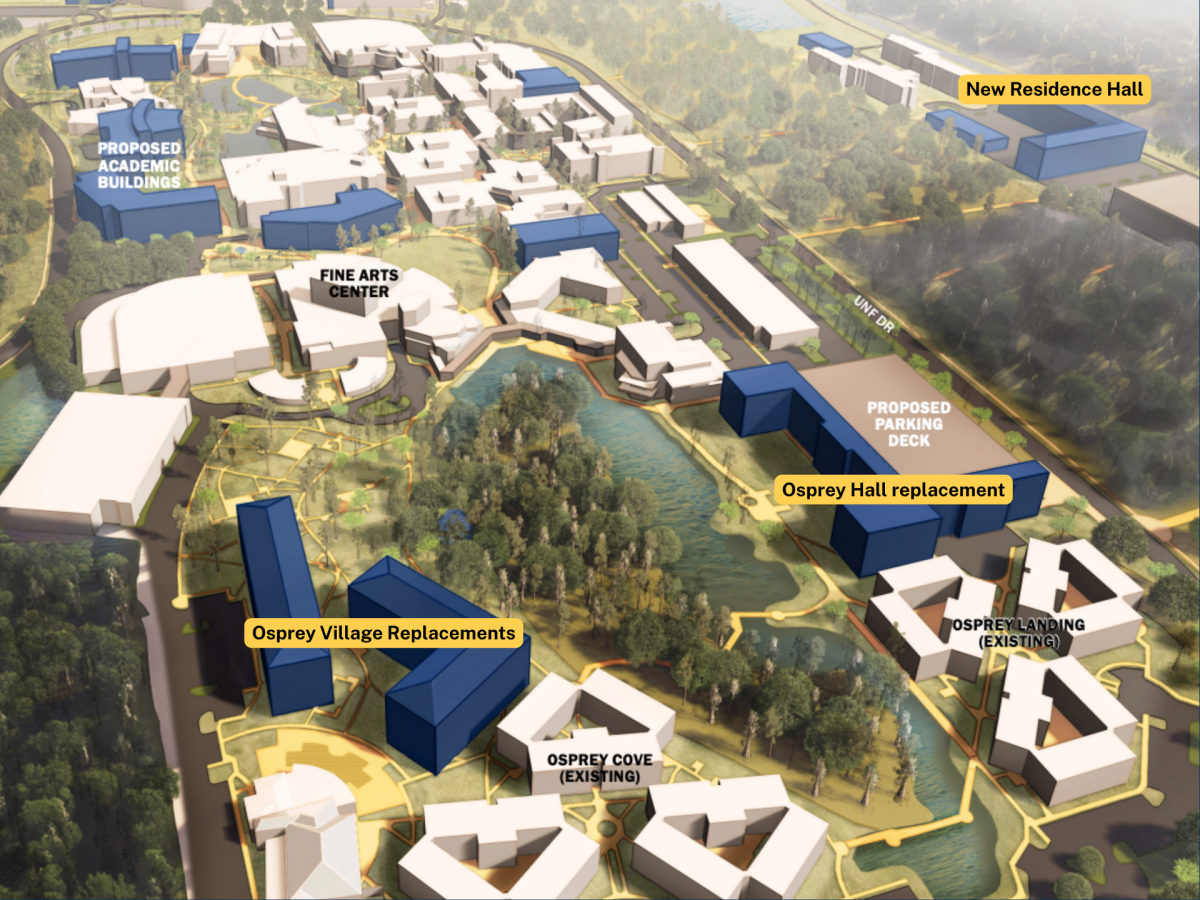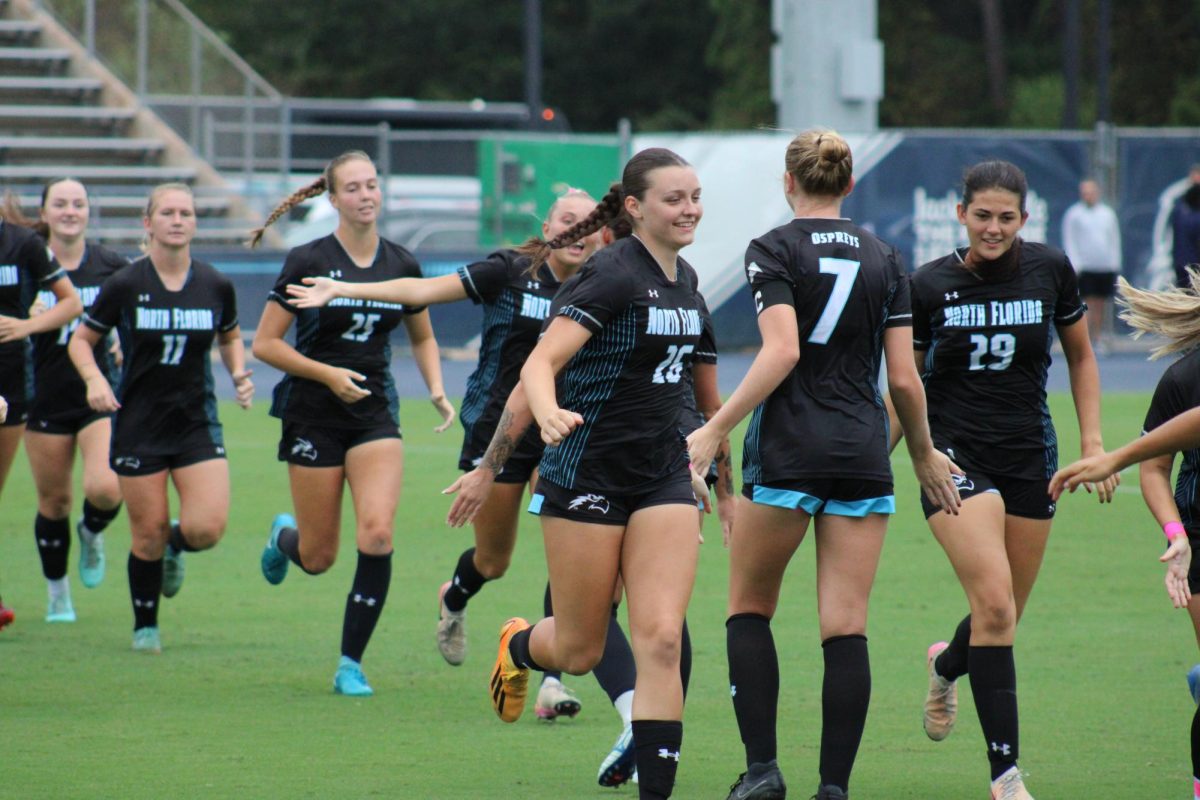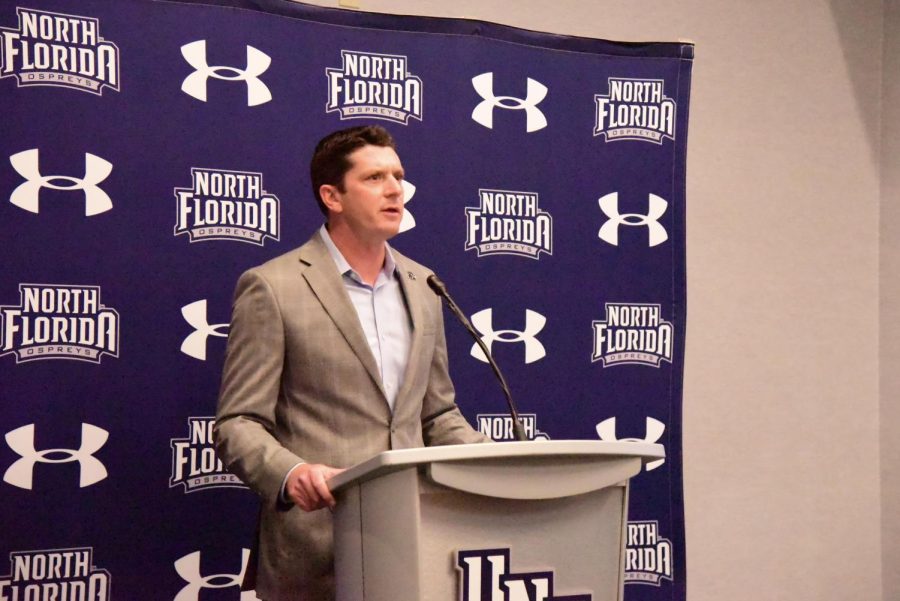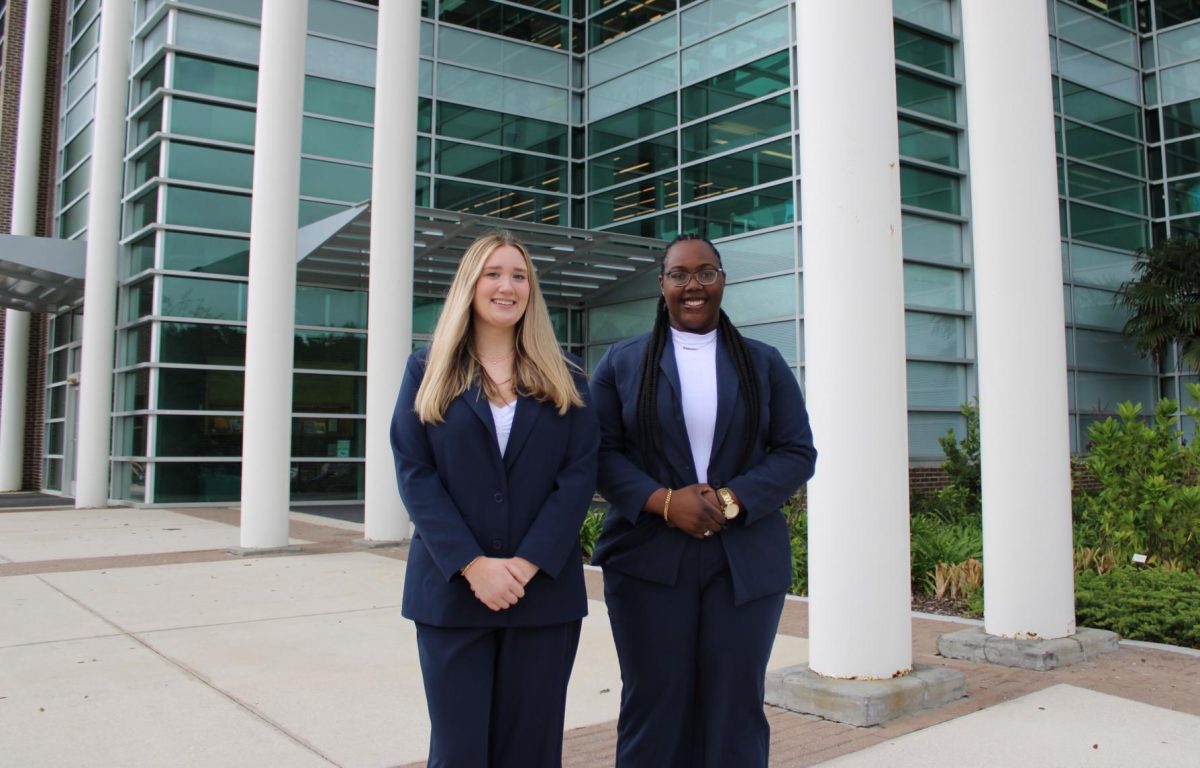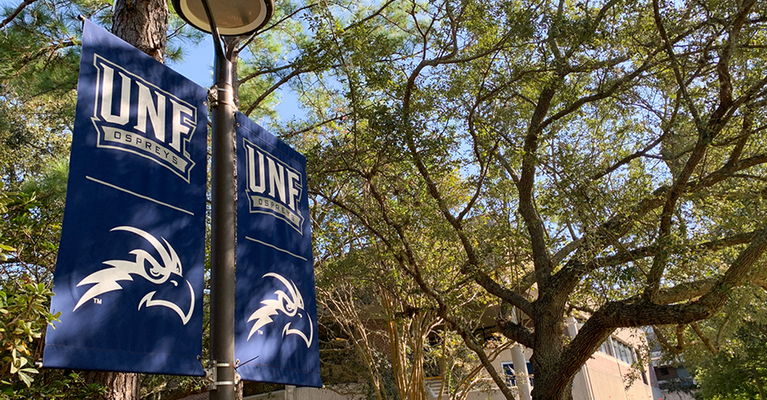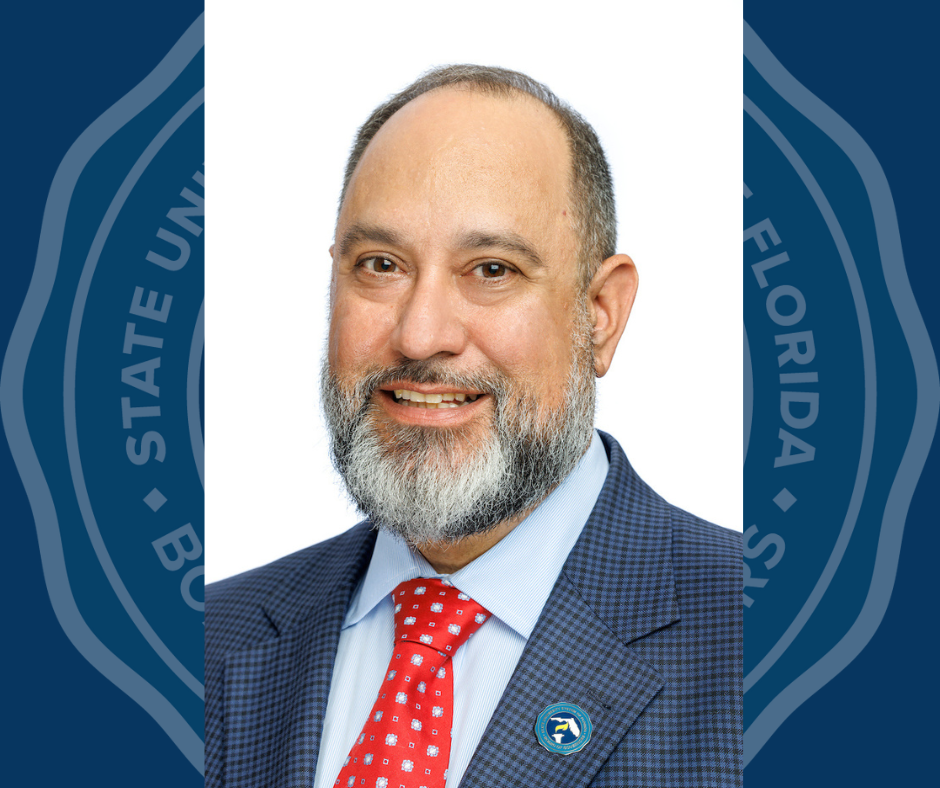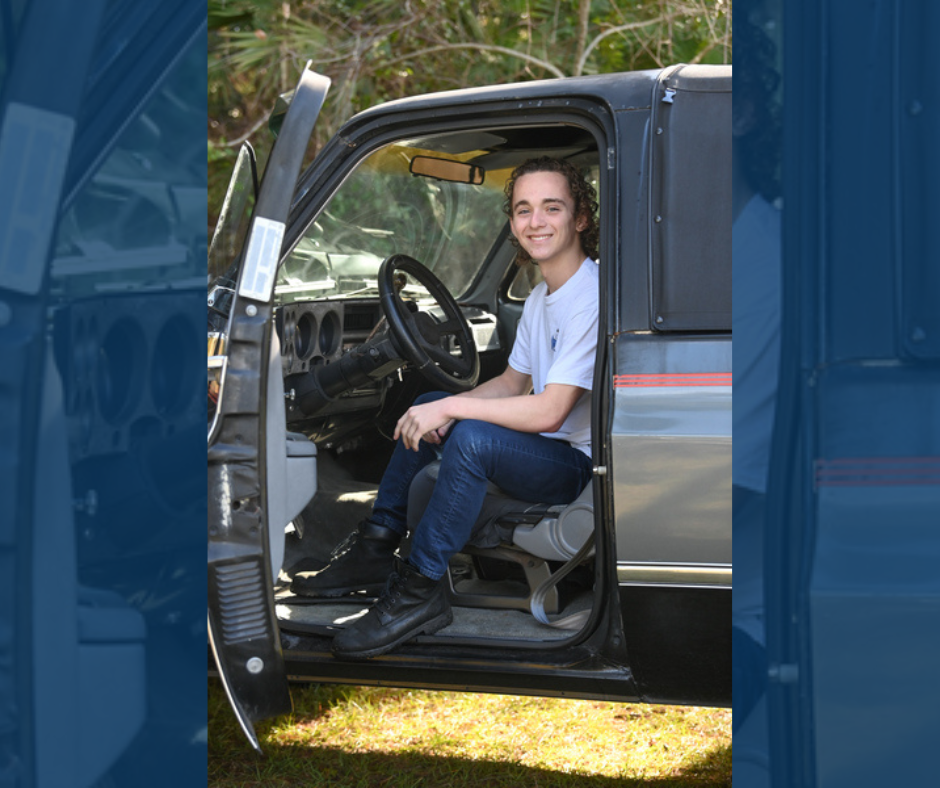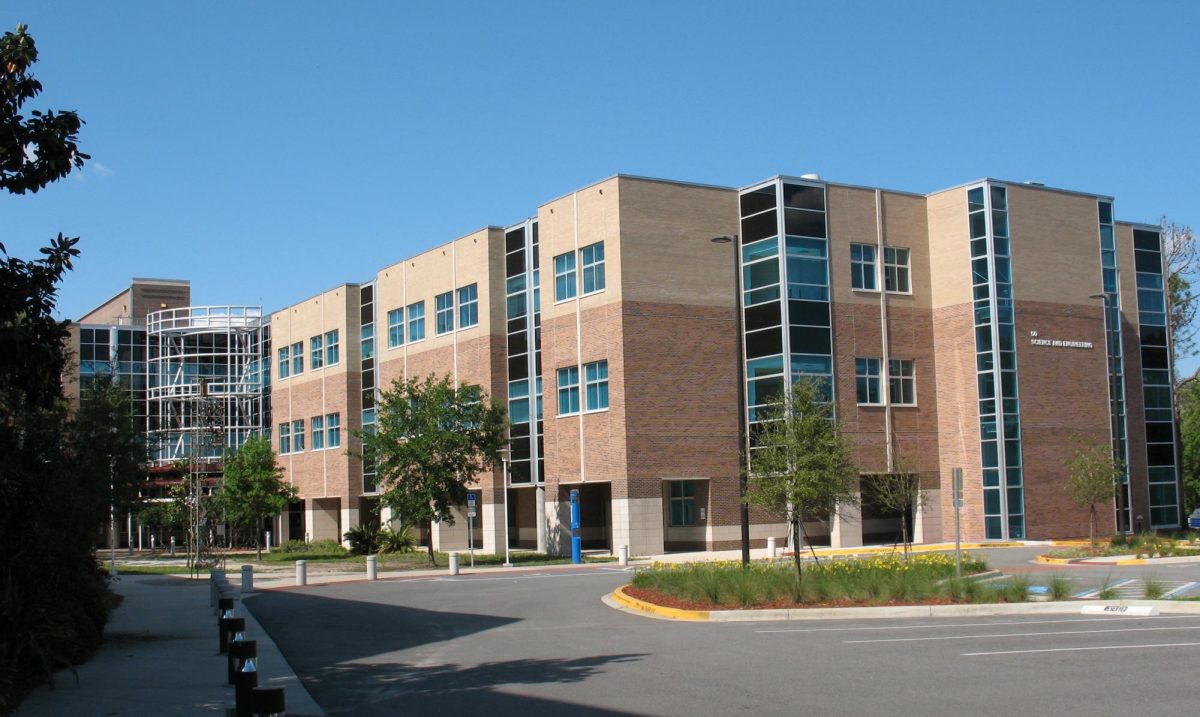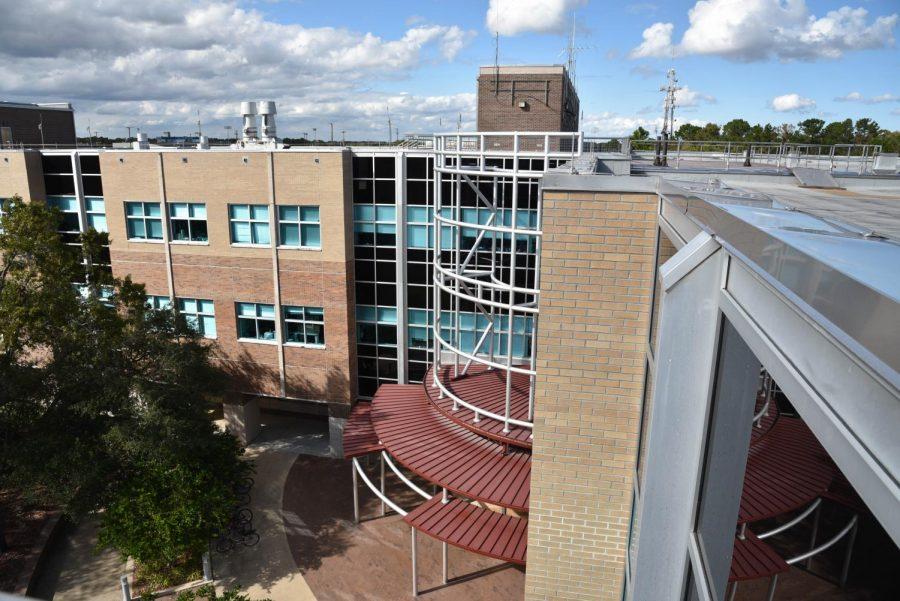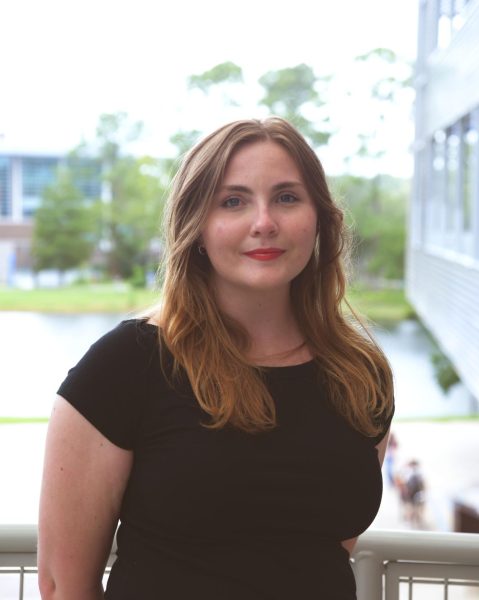The University of North Florida’s recently released campus master plan outlines a broad vision for the future of campus infrastructure, including several major developments in student housing.
Presented to the Board of Trustees on July 24, the plan serves as a flexible roadmap for the next decade. Among the most significant changes are new residence halls, apartment-style complexes, and the demolition and replacement of aging housing facilities like Osprey Hall and Osprey Village.
According to Bob Boyle, assistant vice president of Housing and Residence Life, the master plan reflects both the growing demand for campus housing and the university’s long-term enrollment goals.
New Housing Projects
In the plan’s second phase (2032–2035), four new apartment-style buildings, referred to as “Flats Ridge,” are set to be constructed along with a new dining option. These additions will be located near the existing Flats at UNF and are designed to accommodate the increasing demand for apartment-style living among students, which Boyle said has remained consistently strong.
In addition to the Flats Ridge development, a new residence hall being built by a third party is expected to open in Fall 2027 and add more than 700 beds to UNF’s housing inventory.
“Osprey Ridge is opening, and we know the third party is going to build 700-plus beds there next to the Flats,” Boyle said. “Opening at some point, fall 2027, it sounds like, which is good.”
Next to the newly built Osprey Ridge, a new residence hall is included within phase three of the plan, projected to be completed over the next 10 years.
A Greek housing village is in phase three of the plan as well. Boyle said a “placeholder” in the plan for Greek housing is a good idea. He said making Greek Housing happen will mean a concerted effort by Housing, students, and Greek organizations at the local and national levels.
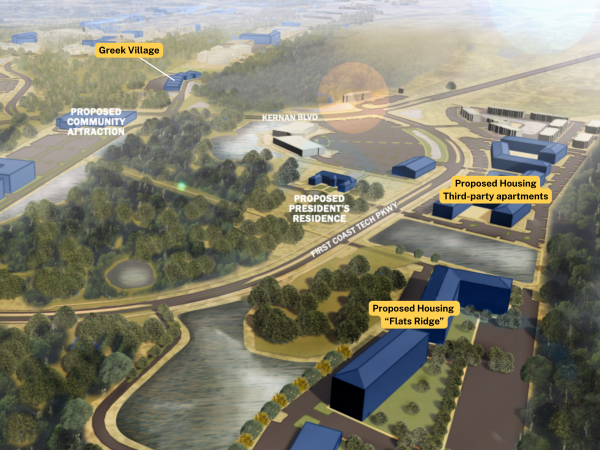
“We want to be mindful that we keep it at least as part of the plan,” Boyle said. “So at the right time, when all the partners are involved, you want to keep a placeholder for it.”
Boyle also discussed the logistics of completing a Greek village in addition to other housing projects within the next decade.
“I’m glad there’s at least a placeholder for it somewhere, but [can we] pull it all off in the next 10 years? I think those are bigger questions for the big bosses to figure out. Where do we want to put resources and the time and effort it takes?” Boyle said.
Demolition of Osprey Hall and Part of Osprey Village
The master plan also proposes demolishing Osprey Hall and part of Osprey Village—two of UNF’s oldest residence halls built in the 1980s. It’s in the plans that both would be replaced by new housing facilities.
Boyle explained that age, cost of maintenance and long-term usability were all factors in the demolition plans.
“It’s also trying to forecast what things are going to cost, what it costs to construct versus what it costs to renovate something,” Boyle said. “You want students to have a good experience.”
Boyle added that maintaining older buildings becomes increasingly expensive and may not provide the best value for students.
“When you start talking about larger heating and ventilation, AC issues or whatever it is… the cost jumps really quite a bit,” Boyle said.
Still, Boyle emphasized that no final decision has been made, and the process remains flexible.
“You can’t say all those things are set in concrete today, you’ve got to think about it,” Boyle said.
Renovations are also in the plan for Osprey Cove and Osprey Landing, part of which are starting this fall.
Planning for Growth
UNF’s strategic goal to increase enrollment to 25,000 students in the coming years is one of the primary drivers behind the housing expansion. Boyle said the master plan takes this growth into account while balancing available resources.
“The strategic plan from the president and from leadership is, you know, we want to get to 25,000 students. And yeah, that’s a pretty big jump,” he said. “You got to plan for housing.”
Planning for long-term infrastructure is another element of the expansion. Boyle cited the construction of Osprey Fountains in 2009 as an example of forward-thinking planning.
While UNF President Limayem remains optimistic about growth, UNF’s fall enrollment has been on the decline since its peak in 2019, according to the university’s enrollment dashboard. Additionally, as of Spring 2025, UNF had 15,739 enrolled students, according to a university spokesperson iThis means nearly 10,000 more students would have to enroll over the next three years for the university to meet its goal.
“We are predicting very strong enrollment this year, probably one of the strongest, if not the strongest, enrollment in the history of UNF,” Limayem said at the July 24 BOT meeting.
Looking Ahead
The campus master plan is currently in the 90-day public comment period. It’ll be reviewed by government agencies before it returns to the BOT for adoption in November.
While much of the housing development outlined in the plan is still years away, Boyle said the university is focused on being proactive and strategic.
“As we have opportunities as a university to grow physically, to meet demand from students and just the general UNF population, you want to make sure you’re strategic about it,” Boyle said.
___
For more information or news tips, or if you see an error in this story or have any compliments or concerns, contact editor@unfspinnaker.com.




